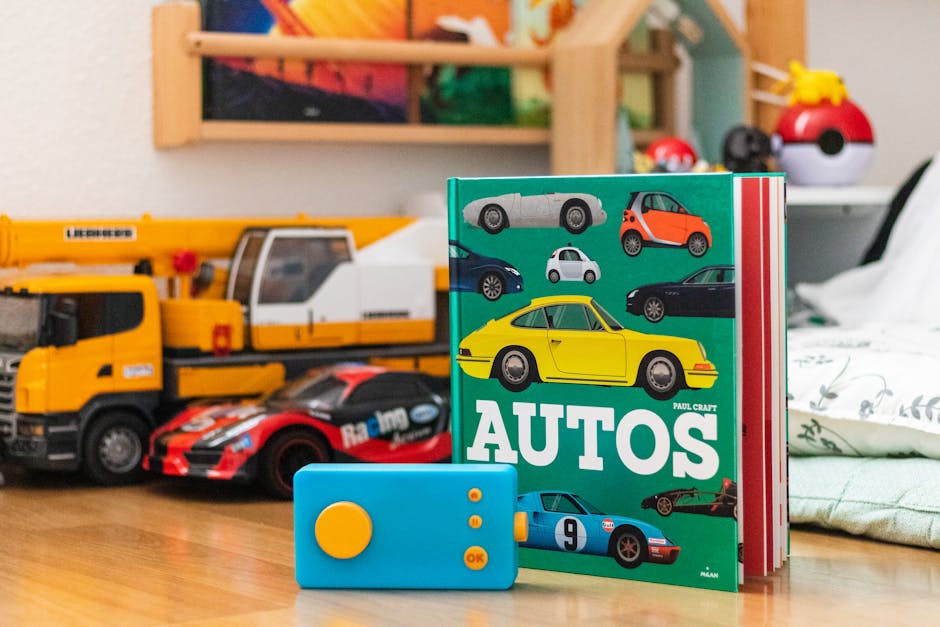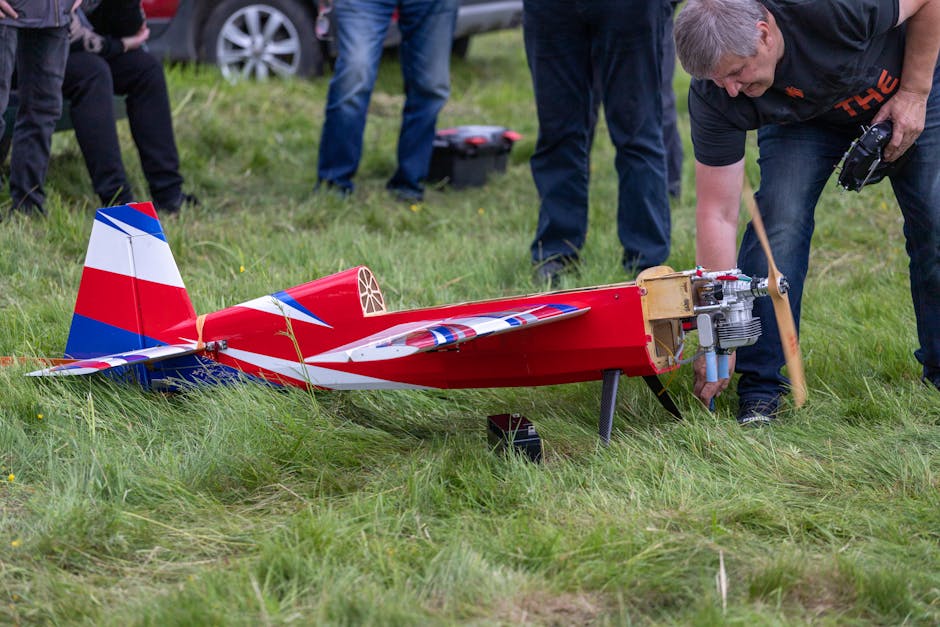Introduction to RC Cars and STEM Learning
RC cars, or remote-controlled cars, aren’t just toys. They can be powerful tools to get kids excited about science, technology, engineering, and math, also known as STEM. When kids play with RC cars, they’re not just having fun. They’re also learning. They get hands-on experience with physics when they see how the car speeds up or slows down. They touch on engineering when they figure out how to make their car go faster or navigate tricky turns. Technology comes into play with the remote controls and any modifications they make to their cars. And, math is everywhere—from calculating speeds to measuring distances. So, playing with RC cars is more than just a game. It’s a doorway to understanding complex concepts through real-world applications, making learning both fun and impactful.
Understanding the Basics of RC Cars
RC cars aren’t just toys—they’re complex gadgets that pack a lot of learning into a small, speedy package. To start with, RC stands for “Remote Control” or “Radio Controlled”. These cars are powered by batteries or sometimes fuel and are controlled from a distance using a handheld transmitter. Inside each car, you’ll find an electronic system that includes a receiver that gets signals from the controller. This tells the car’s motor what to do, from speeding up to turning around. The car’s design also introduces kids to basic engineering concepts. For example, most RC cars have a suspension system, gears, and a chassis (which is just a fancy word for the frame of the car). By playing with and possibly even building these cars, kids start to understand how these components work together to make the car move. It’s hands-on learning that feels more like fun than education.
How RC Cars Teach Engineering Principles
Kids learn about engineering principles through RC cars by diving into how these toys are designed and operate. Take the process of assembling an RC car, for example. It’s like a puzzle, requiring understanding of how each part plays a role in making the car move. This introduces key engineering concepts such as electrical circuits when connecting the motor and battery, and mechanical engineering when assembling gears and wheels.
Understanding the materials used in RC cars also feeds into learning. Kids see firsthand how the choice of materials can affect the car’s performance, durability, and even its speed. Soft rubber tires might grip better but wear down quickly, teaching trade-offs in material science.
Then there’s the tweaking and tuning aspect, which is all about problem-solving and optimization. By testing and adjusting their cars, kids learn that small changes can have big impacts on performance. This hands-on experimentation is the heart of engineering - identifying a problem, hypothesizing solutions, testing, and refining.
In essence, playing with RC cars isn’t just fun. It’s a practical, engaging way to grasp complex engineering principles, laying a solid foundation for future STEM learning.
Integrating RC Cars with Science Curriculum
RC cars aren’t just toys; they’re powerful tools for learning. When we weave them into the science curriculum, kids get hands-on experience with principles of physics firsthand. Think about it: understanding how speed, friction, and gravity affect motion becomes much clearer when you can see it in action. Plus, tweaking an RC car to go faster or navigate obstacles brings in the engineering mindset. Here’s the cool part: students often dive into problem-solving without even realizing it. They’re not just memorizing facts; they’re applying them. And guess what? This type of learning sticks. It’s one thing to read about aerodynamics; it’s another to adjust an RC car’s wings for better stability. Whether it’s calculating velocity or experimenting with gear ratios, RC cars transform abstract concepts into something tangible. This method doesn’t just spark interest in science and technology; it fuels it. By integrating RC cars into lessons, educators provide a dynamic, engaging way to explore STEM subjects, turning curious kids into passionate learners.
Mathematics Made Fun Through RC Car Racing
Kids often see math as a bunch of numbers and formulas they have to memorize, but RC car racing changes the game. It makes math tangible and exciting. When kids calculate the speed of their RC cars, they’re using math. They learn about distance, time, and velocity hands-on. For instance, if their car covers 10 meters in 5 seconds, they’ll quickly realize that the car’s speed is 2 meters per second. This direct application of math helps kids understand concepts better and see the relevance of math in real life. Adjusting angles to turn their cars, optimizing speeds for different tracks, and even calculating battery life for the longest run – all involve math. Suddenly, those abstract numbers and formulas make sense, and the dread of math class turns into the thrill of race day. This approach not only makes math fun but also builds critical thinking and problem-solving skills, which are crucial in STEM fields. So, by racing RC cars, kids are not just having a great time; they’re learning and applying important mathematical concepts without even realizing it.
Technology in Action: Programming Your RC Car
Getting your RC car to follow commands is more than just fun; it’s a hands-on lesson in programming. By connecting your RC car to a computer or tablet, kids start learning the basics of coding. They’ll see their code turn into action as the car moves forward, turns, or even navigates obstacles. This process introduces important programming concepts like loops, if-then statements, and variables in a way that’s engaging and easy to understand. It’s not just typing on a screen; it’s watching your commands come to life. Through programming their RC car, kids develop critical thinking and problem-solving skills, essential in any STEM field. Plus, it demystifies technology, showing kids they can control and create with it, not just use it.
Designing and Building: An RC Car Project
Getting kids to dive into a project where they design and build their own RC (Remote Controlled) car can unlock a whole new level of learning. This isn’t just about putting together a toy; it’s about understanding the science, technology, engineering, and math (STEM) behind how things work. First up, kids will learn the basics of design. They’ll sketch their ideas, thinking about how each part affects the car’s move. Does a bigger wheel mean faster speed? How will the car turn? These questions lead them into engineering territory, where they experiment with materials and shapes to see what works best. Next, the build phase brings in technology and math. They’ll need to figure out the circuits for the remote control, understand the math behind creating a balanced vehicle, and maybe even code a bit if they’re making a programmable car. This hands-on project doesn’t just teach them textbook concepts; it helps them problem-solve, think critically, and maybe most importantly, learn from their mistakes. Plus, they end up with a cool RC car that they built themselves. It’s a win-win.
Problem-Solving and Critical Thinking Skills
When kids dive into the world of RC cars, they’re not just playing; they’re sharpening their problem-solving and critical thinking skills. Think about it; when an RC car hits a snag, breaks down, or needs an upgrade, kids have to think on their feet. They start asking questions like “Why isn’t my car running?” or “How can I make it go faster?” This leads them to experiment, try new things, and learn from their mistakes. It’s all about trial and error, a key component of STEM education.
As they navigate through these challenges, they’re also learning to analyze situations. For example, adjusting the angles of the wheels can help their car turn better. They learn this through observation, hypothesis, and testing – the core of critical thinking.
In the grand scheme, these moments of tinkering and tweaking with their RC cars teach kids a valuable lesson: not to back down when faced with a problem. It encourages a mindset of resilience and continuous improvement, traits that are crucial in any STEM field. So, every time they’re figuring out how to get their RC car out of a tight spot or making it zoom faster, they’re actually building a strong foundation for problem-solving and critical thinking.
Real-World Applications of RC Car Learning
RC cars aren’t just toys; they are a gateway to understanding real-world engineering and science concepts. By tinkering with these miniature vehicles, kids can see firsthand how theories from textbooks come to life. For example, when adjusting the gears of an RC car, they’re engaging with physics by learning about speed, velocity, and friction. It makes abstract concepts tangible. Building and modifying RC cars introduces children to the basics of mechanical engineering. They learn how different parts work together to make the car move. This could be their first step towards understanding how real cars or even larger machines operate. Electrical concepts come into play when they wire the motors and install batteries, sparking an interest in electrical engineering. Additionally, racing these cars can teach them about aerodynamics—why certain car shapes go faster or how wind resistance impacts speed. It’s like holding a mini science fair right in your living room. Plus, the trial and error involved in perfecting their RC car’s performance boosts problem-solving skills and resilience. They learn that failure is just a step towards improvement. This hands-on experience with RC cars could spark a lifelong interest in STEM (science, technology, engineering, and math) fields by showing how fun and interactive learning can be. So, these toys offer much more than entertainment; they are educational tools that prepare kids for the future by giving them a practical understanding of scientific principles.
Conclusion: The Future of Learning with RC Cars
RC cars are more than just toys; they are powerful tools that can ignite a child’s interest in STEM (Science, Technology, Engineering, Mathematics) fields. By integrating RC cars into learning, kids can develop a hands-on understanding of physics concepts like velocity and aerodynamics, enhance their problem-solving skills as they build and modify their vehicles, and even delve into technology and engineering by understanding how these cars are designed and operate. As we look towards the future, the inclusion of RC cars in educational settings is becoming increasingly relevant. They offer a fun, engaging way for children to connect with complex subjects, potentially paving the way for a new generation of engineers, scientists, and innovators. The beauty of learning through RC cars is that it doesn’t feel like learning; it feels like play. And in this play, lies the future of education—interactive, engaging, and deeply informative. By embracing such innovative methods, we can make STEM subjects more accessible and appealing to kids, ensuring that learning is not only effective but enjoyable.





Leave a comment
This site is protected by hCaptcha and the hCaptcha Privacy Policy and Terms of Service apply.